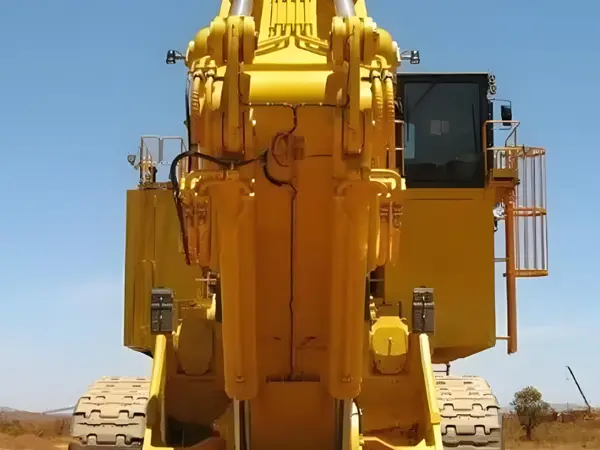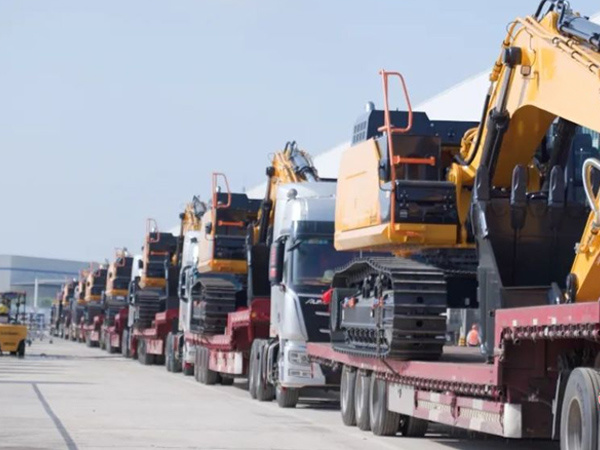Understanding Bucket Cylinder Excavators: The Power Behind Modern Construction
Release time:
2025-03-12
When it comes to heavy machinery, the bucket cylinder excavator stands out as a crucial component in modern construction and engineering processes. This powerful machine is designed to handle a variety of tasks, making it an indispensable tool in the realm of excavation. The bucket cylinder excavator functions primarily through a hydraulic system that controls the movement of the bucket, allowing
When it comes to heavy machinery, the bucket cylinder excavator stands out as a crucial component in modern construction and engineering processes. This powerful machine is designed to handle a variety of tasks, making it an indispensable tool in the realm of excavation.
The bucket cylinder excavator functions primarily through a hydraulic system that controls the movement of the bucket, allowing it to dig, lift, and move large quantities of earth and materials. The bucket is attached to a boom that pivots on a rotating platform, enabling the excavator to reach challenging angles and depths. This flexibility is essential for a variety of applications, from digging foundations to trenching for utilities.
One of the key features of the bucket cylinder excavator is its hydraulic cylinder, which powers the bucket's movements. The hydraulic system operates using fluid pressure, allowing for smooth and precise control even under heavy loads. This efficiency is particularly important in construction, where time and accuracy can significantly impact project timelines and costs.
Moreover, the bucket cylinder excavator is equipped with different types of buckets, each tailored to specific tasks. For instance, a standard digging bucket is ideal for general excavation, while a trenching bucket is designed for narrow, deep digs. This versatility enables operators to select the right attachment for their specific needs, enhancing productivity and effectiveness on the job site.
Safety is also a major consideration when operating bucket cylinder excavators. Operators must be well-trained in the use of this machinery to prevent accidents and ensure that the machine functions correctly. Regular maintenance is essential; hydraulic systems must be checked for leaks, and components should be inspected for wear and tear. Proper upkeep not only prolongs the life of the excavator but also safeguards the operator and surrounding workers.
In recent years, advancements in technology have further improved bucket cylinder excavators. Features such as GPS and automated controls are becoming more common, allowing for greater precision in excavation tasks. These innovations help to minimize waste and enhance the efficiency of excavation processes, ultimately contributing to more sustainable construction practices.
In conclusion, the bucket cylinder excavator is a vital asset in the construction industry, combining power, versatility, and efficiency. Its hydraulic system and specialized attachments make it suitable for a wide range of excavation tasks, while ongoing advancements in technology promise to enhance its capabilities further. As construction projects continue to evolve, understanding the importance of the bucket cylinder excavator will be essential for anyone involved in the field.
The bucket cylinder excavator functions primarily through a hydraulic system that controls the movement of the bucket, allowing it to dig, lift, and move large quantities of earth and materials. The bucket is attached to a boom that pivots on a rotating platform, enabling the excavator to reach challenging angles and depths. This flexibility is essential for a variety of applications, from digging foundations to trenching for utilities.
One of the key features of the bucket cylinder excavator is its hydraulic cylinder, which powers the bucket's movements. The hydraulic system operates using fluid pressure, allowing for smooth and precise control even under heavy loads. This efficiency is particularly important in construction, where time and accuracy can significantly impact project timelines and costs.
Moreover, the bucket cylinder excavator is equipped with different types of buckets, each tailored to specific tasks. For instance, a standard digging bucket is ideal for general excavation, while a trenching bucket is designed for narrow, deep digs. This versatility enables operators to select the right attachment for their specific needs, enhancing productivity and effectiveness on the job site.
Safety is also a major consideration when operating bucket cylinder excavators. Operators must be well-trained in the use of this machinery to prevent accidents and ensure that the machine functions correctly. Regular maintenance is essential; hydraulic systems must be checked for leaks, and components should be inspected for wear and tear. Proper upkeep not only prolongs the life of the excavator but also safeguards the operator and surrounding workers.
In recent years, advancements in technology have further improved bucket cylinder excavators. Features such as GPS and automated controls are becoming more common, allowing for greater precision in excavation tasks. These innovations help to minimize waste and enhance the efficiency of excavation processes, ultimately contributing to more sustainable construction practices.
In conclusion, the bucket cylinder excavator is a vital asset in the construction industry, combining power, versatility, and efficiency. Its hydraulic system and specialized attachments make it suitable for a wide range of excavation tasks, while ongoing advancements in technology promise to enhance its capabilities further. As construction projects continue to evolve, understanding the importance of the bucket cylinder excavator will be essential for anyone involved in the field.





